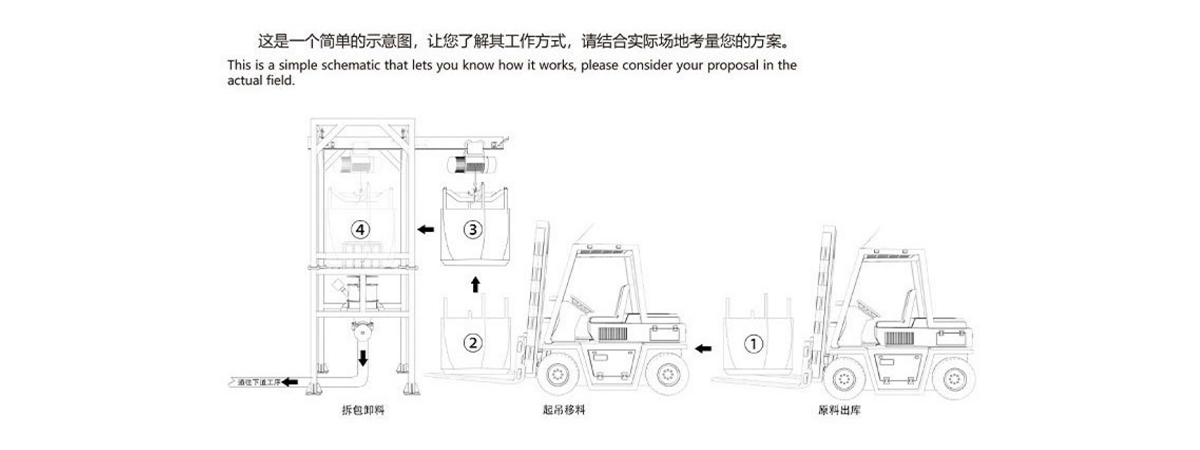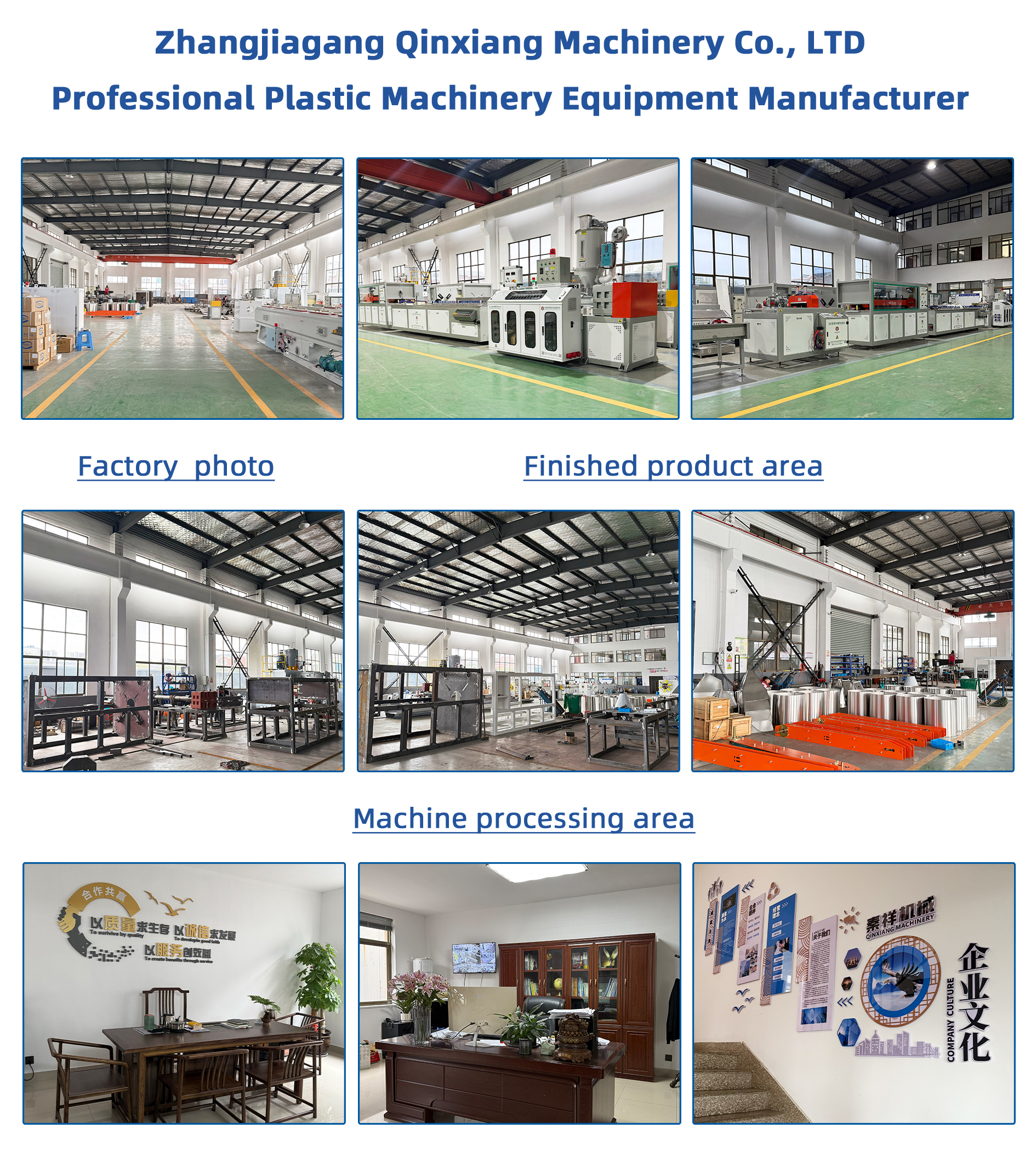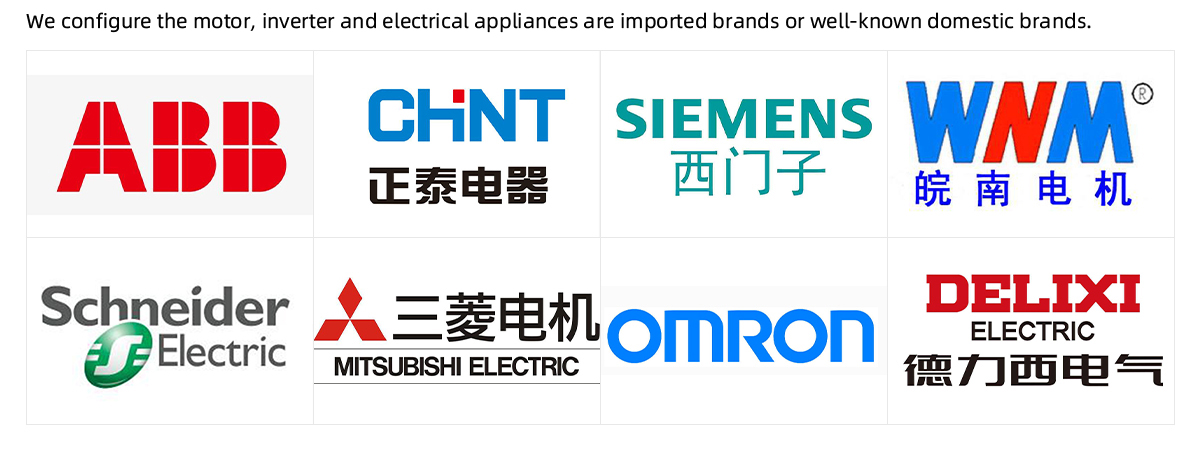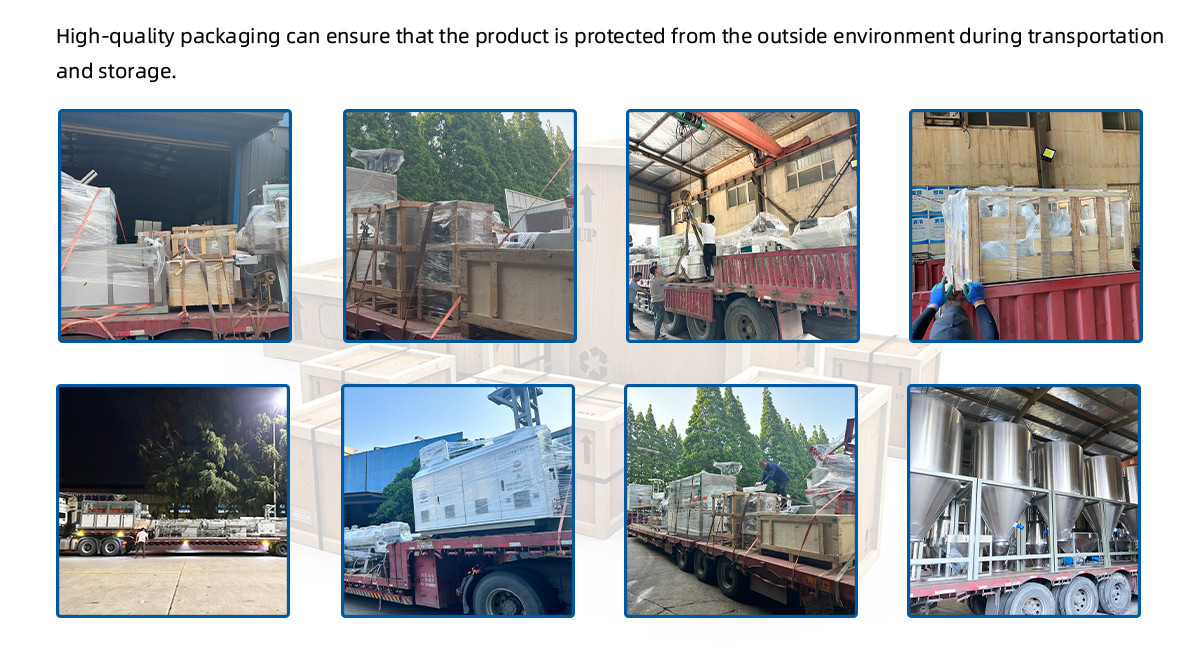▏How the Bulk Bag Unloader Works
A Bulk Bag Unloader typically operates in several stages to ensure smooth unloading of materials. The process begins with the operator loading the bulk bag onto the unloader frame. The bag is securely attached to the frame using hooks or straps. Once secured, the bag’s discharge spout is positioned over a hopper or conveyor system that will carry the material to its next stage in the production process.
The unloader uses various mechanisms to initiate the unloading process. Some systems incorporate a vibrating platform, which helps break up compacted material and encourages the material to flow more freely. Others use controlled airflow to create a gentle stream that pushes the material out of the bag.
The flow control valve regulates the rate at which the material is discharged, ensuring that the unloading process is continuous and smooth. Once the material has been completely unloaded from the bag, the operator can easily remove the empty bag and load a new one, thus minimizing downtime.
▏Benefits of Using a Bulk Bag Unloader
 | Enhanced Productivity
By automating the unloading process, the Bulk Bag Unloader significantly increases productivity. The speed and efficiency with which materials are unloaded reduce the need for manual labor, allowing operators to focus on other tasks. This automation speeds up material handling, ensuring that production lines can continue without interruption. |
 | Reduced Material Waste
Because of its precision in unloading, the Bulk Bag Unloader helps minimize material wastage. The controlled flow ensures that the materials are transferred without spillage or loss, which is especially critical when working with expensive raw materials or hazardous substances. Additionally, by eliminating the need for manual unloading, the risk of human error is minimized. |
 | Improved Workplace Safety
Handling bulk materials manually can present significant safety risks, such as lifting injuries, exposure to dust or hazardous chemicals, and the potential for accidents during manual unloading. The Bulk Bag Unloader reduces these risks by automating the process, allowing workers to remain at a safe distance from the unloading area. The machine’s integrated safety features, such as dust containment and emergency stop systems, further enhance worker safety. |
 | Better Material Flow Control
The Bulk Bag Unloader allows for a more consistent and controlled flow of materials, preventing issues like bridging or clogging. By ensuring that the material flows smoothly and continuously, the unloader enhances the efficiency of downstream processes, such as mixing, processing, or packaging. |
▏Applications of the Bulk Bag Unloader
 | Chemical Industry
The Bulk Bag Unloader is widely used in the chemical industry for the handling of bulk chemicals and powders. Whether for plastic resins, pigments, or chemical additives, the unloader provides a safe and efficient way to transfer materials into production systems without the risk of contamination or material loss. |
 | Food Processing
In food processing plants, bulk bags are commonly used to store dry ingredients such as flour, sugar, or spices. The Bulk Bag Unloader ensures that these materials are unloaded quickly, safely, and without contaminating the ingredients. The machine is designed to meet strict hygiene standards, making it ideal for food-grade applications. |
 | Pharmaceuticals
The pharmaceutical industry relies on the Bulk Bag Unloader for the handling of active pharmaceutical ingredients (APIs), excipients, and other bulk materials. The precise control over material flow and the system’s ability to contain dust make it perfect for applications where cleanliness and safety are critical. |
 | Plastics and Polymers
The plastics and polymers industry often uses bulk bags to store resin pellets and powders. The unloader ensures that these materials are delivered to the next stage of production without any disruption, preventing the loss of material and reducing the risk of contamination during the handling process. |
The Bulk Bag Unloader is a crucial investment for any industry that deals with large quantities of bulk materials. With its durable design, precise control mechanisms, and integrated safety features, it offers an efficient and cost-effective solution to improve the material handling process. By automating the unloading of bulk bags, companies can improve productivity, reduce waste, enhance safety, and maintain a cleaner, more efficient operation.
As industries continue to scale up production, the Bulk Bag Unloader will remain an essential tool for streamlining material handling operations, ensuring that processes are both cost-effective and efficient.
▏Installation and Maintenance



















































